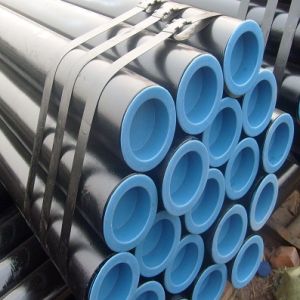The standard thickness of sheet pilePosted by Chase Liu on December 21st, 2023  Sheet piles refer to sheet piles that are driven (vibrated) into the foundation to resist horizontal pressure and water pressure. Sheet piles are often used in cofferdams or anti-seepage in water conservancy projects. Commonly used sheet piles are steel sheet piles, such as cold-formed steel sheet piles and hot rolled steel sheet piles. What is the most common sheet pile? The most common type of sheet pile is the steel sheet pile, which is widely used for various construction and civil engineering applications. These sheet piles are typically made of steel and are driven into the ground to create retaining walls, cofferdams, and other similar structures. Their strength, durability, and versatility make them a popular choice in many construction projects. What is standard steel sheet pile? Standard steel sheet piles typically refer to sheet piles that conform to recognized industry standards in terms of dimensions, material specifications, and performance characteristics. These standards may be set by organizations such as the American Society for Testing and Materials (ASTM) or other national and international standards bodies. Standard steel sheet piles are often available in various shapes and sizes, such as U-shaped, Z-shaped, or straight-web sections, and they are designed to provide predictable strength, load-bearing capacity, and interlocking features for efficient installation and use in different construction applications. The specific type of standard steel sheet pile used in a project will depend on factors such as soil conditions, water levels, and structural requirements. The standard thickness of sheet pile The standard thickness of steel sheet piles can vary depending on the specific design and application requirements. However, typical thicknesses for steel sheet piles range from 8 millimeters (mm) to 16 mm, with variations beyond this range for specialized or custom applications. It's important to note that different manufacturers may offer varying standard thicknesses based on their product lines and regional standards. Therefore, when selecting steel sheet piles for a project, it is crucial to consult the relevant industry standards and specifications to ensure that the chosen sheet pile meets the necessary thickness requirements for the intended use. How thick are steel piles? Steel sheet pile thickness can vary based on the specific design, application, and load-bearing requirements. However, steel sheet piles commonly range in thickness from 8 millimeters (mm) to 16 mm for typical applications. When would you use sheet piling? Sheet piling is commonly used in a variety of construction and civil engineering applications, including the following scenarios: 1.Retaining Walls Sheet piling is often used to create retaining walls to stabilize and support soil or to prevent erosion in areas with changes in elevation. 2.Cofferdams In marine construction and bridge building, sheet piling is used to create temporary or permanent cofferdams to exclude water from excavation sites, allowing for construction in a dry environment. 3.Flood Protection Sheet piling serves as a protective barrier against floodwaters when installed along riverbanks, coastlines, or other vulnerable areas. 4.Basement Construction Sheet piling can be used to provide temporary or permanent structural support during the construction of basements or underground structures. 5.Bulkheads and Seawalls In waterfront development and marine infrastructure projects, sheet piling is utilized to construct bulkheads and seawalls for shoreline protection. 6.Cut-Off Walls Sheet piling is employed to create impermeable barriers to control groundwater seepage or contamination in environmental remediation projects or infrastructure construction. Like it? Share it!More by this author |


